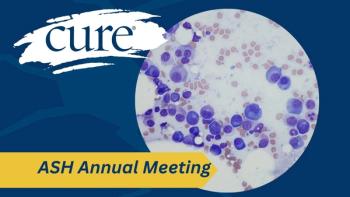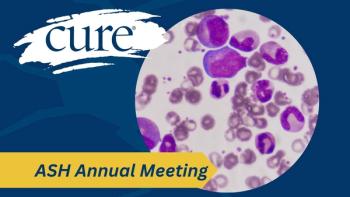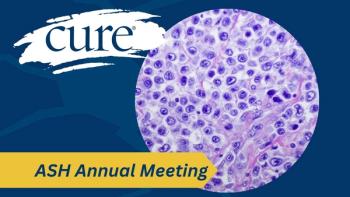
Stage 2 Papillary Thyroid Cancer: Diagnosis, Treatment and What to Expect
Key Takeaways
- Papillary thyroid cancer staging depends on age, with stage 2 involving distant spread in younger patients and larger tumors or regional spread in older patients.
- Diagnosis involves physical exams, imaging, biopsies, and blood tests to characterize and stage the cancer.
Here is a basic guide to what you need to know about stage 2 papillary thyroid cancer.
What is Stage 2 Papillary Thyroid Cancer? Staging and Key Facts
- For patients under 55 years old: Papillary thyroid cancer is classified as stage 2 if the cancer has spread to distant parts of the body, such as the lungs or bones. This is rare for initial presentation, as most young patients with localized or regional spread are stage 1.
- For patients 55 years or older: The staging criteria are more detailed, based on tumor size and spread to lymph nodes or nearby structures. A tumor larger than 4 cm or one that has spread regionally but not distantly is often Stage 2 or 3.
Papillary thyroid cancer, even at stage 2, often has an excellent prognosis due to its slow-growing nature and high responsiveness to treatment.
Diagnosing Stage 2 Papillary Thyroid Cancer: Tests, Imaging, and Biopsy Explained
The diagnosis of papillary thyroid cancer typically involves a series of steps to locate, characterize and stage the cancer.
- Physical exam and health history: Your doctor will feel for any lumps (nodules) or swollen lymph nodes in your neck and discuss potential risk factors, such as a history of high radiation exposure to the head and neck.
- Imaging tests: An ultrasound is the preferred method to visualize the thyroid nodule, check for suspicious features, and examine nearby lymph nodes. Other scans, like CT or MRI, may be used for more detailed imaging or to check for distant spread.
- Fine-needle aspiration biopsy: This is the definitive diagnostic step. A very thin needle is used to take a small tissue sample from the thyroid nodule. A pathologist then examines the cells for characteristics of papillary cancer.
- Blood tests: These usually include testing levels of thyroid-stimulating hormone (TSH), which helps regulate thyroid function, and sometimes thyroglobulin, a protein produced by thyroid cells that can serve as a tumor marker after treatment.
Your Stage 2 Treatment Plan: Surgery, RAI Therapy and Hormone Management
The primary goal of treatment is to remove or destroy all cancer cells. For stage 2 papillary thyroid cancer, treatment often involves a combination approach.
- Surgery (thyroidectomy): This is the most common initial treatment.
- Total thyroidectomy: Removal of the entire thyroid gland. This is typically recommended for stage 2 cancer, especially if the tumor is large, has spread to lymph nodes or has distant spread.
- Lymph node dissection: If cancer cells are detected in nearby lymph nodes, they will be removed during the surgery (neck dissection) to prevent recurrence.
- Radioactive Iodine (RAI) Therapy: After a total thyroidectomy, a high dose of radioactive iodine, I-131, may be given. Thyroid cells and most papillary cancer cells are unique in their ability to absorb iodine. The RAI destroys any remaining normal thyroid tissue and microscopic cancer cells that may have spread outside the gland. This is a common post-surgical step for larger tumors or those that have spread.
- Thyroid hormone therapy: After a total thyroidectomy, you will need to take a thyroid hormone replacement medication, typically levothyroxine, for the rest of your life. This serves two purposes:
- To replace the essential hormones no longer produced by the removed thyroid.
- To suppress the production of TSH, as high TSH levels can stimulate the growth of any remaining cancer cells.
- External beam radiation therapy or targeted therapy: These options are generally reserved for more advanced or rare cases where the cancer does not respond to RAI or if it has spread to locations like the bones or lungs that cannot be removed surgically.
A Closer Look at Radioactive Iodine (RAI) Therapy Preparation and Protocol
RAI works by exploiting a unique natural property of thyroid cells: their ability to absorb and use iodine to make thyroid hormones.
- The isotope: The treatment uses a radioactive form of iodine, most commonly Iodine-131.
- The "Keyhole" mechanism: Normal thyroid cells, and fortunately most papillary thyroid cancer cells, have a special transporter protein on their surface called the sodium-iodide symporter (NIS). This "keyhole" allows the iodine, including the radioactive isotope, to be taken into the cell.
- Targeted destruction: Once the radioactive iodine is inside the cells (whether residual normal thyroid tissue or cancer cells), it emits beta particles (-particles). These are high-energy electrons that travel a very short distance, effectively delivering a localized, high dose of radiation that destroys the cell's DNA and leads to cell death.
- Selectivity: Because very few other cells in the body absorb iodine to this extent (some other tissues like the salivary glands and stomach absorb a small amount), the radiation is primarily concentrated in the thyroid remnants and cancer sites, sparing most other body tissues.
- Systemic treatment: Since the RAI circulates in the bloodstream, it can effectively seek out and destroy thyroid cancer cells that may have spread to distant parts of the body, such as the lungs or bones.
When Is RAI Therapy Recommended in Papillary Thyroid Cancer?
RAI is typically considered for patients with papillary thyroid cancer who have undergone a total thyroidectomy and are at a higher risk of cancer recurrence or have confirmed spread of the cancer. This can include cases where:
- The cancer is large or aggressive.
- The cancer has spread beyond the thyroid capsule.
- The cancer has spread to multiple lymph nodes in the neck.
- The cancer has metastasized to distant sites (e.g., lungs or bone).
- The goal is to destroy any small remnants of normal thyroid tissue remaining after surgery (called remnant ablation), which makes long-term monitoring for recurrence easier using blood tests like thyroglobulin.
Managing Treatment Side Effects: What to Know About Recovery and Follow-Up
It is important to discuss potential side effects with your oncologist and surgeon before treatment begins.
Surgical Side Effects
- Hypothyroidism: After a total thyroidectomy, you will be permanently unable to produce thyroid hormones, requiring lifelong thyroid hormone replacement therapy.
- Hypoparathyroidism: Accidental damage to or removal of the small parathyroid glands (located near the thyroid) can lead to low calcium levels in the blood (hypocalcemia). This can cause tingling, muscle cramps or spasms and is managed with calcium and vitamin D supplements.
- Voice change: Damage to the recurrent laryngeal nerve, which runs close to the thyroid, can cause hoarseness or a weaker voice. This is usually temporary but can occasionally be permanent.
Radioactive Iodine (RAI) Therapy Side Effects
- Swollen salivary glands (sialadenitis): RAI is absorbed by the salivary glands, which can cause swelling and dryness in the mouth.
- Nausea: Temporary nausea or vomiting can occur shortly after the treatment.
- Dry mouth/eyes: The treatment can affect glands that produce saliva and tears, leading to dryness.
- Long-term risk: There is a small, very rare increased risk of other cancers, such as leukemia, years after high-dose RAI treatment.
Your Long-Term Outlook: Monitoring, Follow-Up, and Thriving After Stage 2 Papillary Thyroid
Stage 2 papillary thyroid cancer, while a serious diagnosis, is typically highly manageable with treatment, and the overall prognosis is often excellent. Your treatment plan will be highly individualized based on your age, the exact features of the tumor and the extent of spread.
Use these questions as a starting point for your discussion with your oncologist:
- "Based on my specific staging, what is the best surgical approach — a lobectomy versus a total thyroidectomy — and why?"
- "Will I require RAI therapy after surgery, and what is the goal of that treatment in my case?"
- "What are the specific steps we will take to monitor me for cancer recurrence after treatment is complete?"
- "What is the most likely long-term impact of this treatment on my quality of life, and what support is available for managing side effects like voice changes or calcium issues?"
This guide is designed to be a starting point. Your personal experience will be unique. By using this information as a foundation for your discussions, you can partner with your oncologist to make the best decisions for your health.
Editor's note: This article is for informational purposes only and is not a substitute for professional medical advice. Please contact your healthcare team with any questions or concerns.
For more news on cancer updates, research and education,
References
- CURE. “Papillary Thyroid Cancer: An Expert Overview for a Newly Diagnosed Patient.” CURE, Sept. 26, 2025.
https://www.curetoday.com/view/papillary-thyroid-cancer-an-expert-overview-for-a-newly-diagnosed-patient - CURE. “Your Thyroid Cancer Journey: From Diagnosis to Survivorship.” CURE, Aug. 27, 2025.
https://www.curetoday.com/view/your-thyroid-cancer-journey-from-diagnosis-to-survivorship





